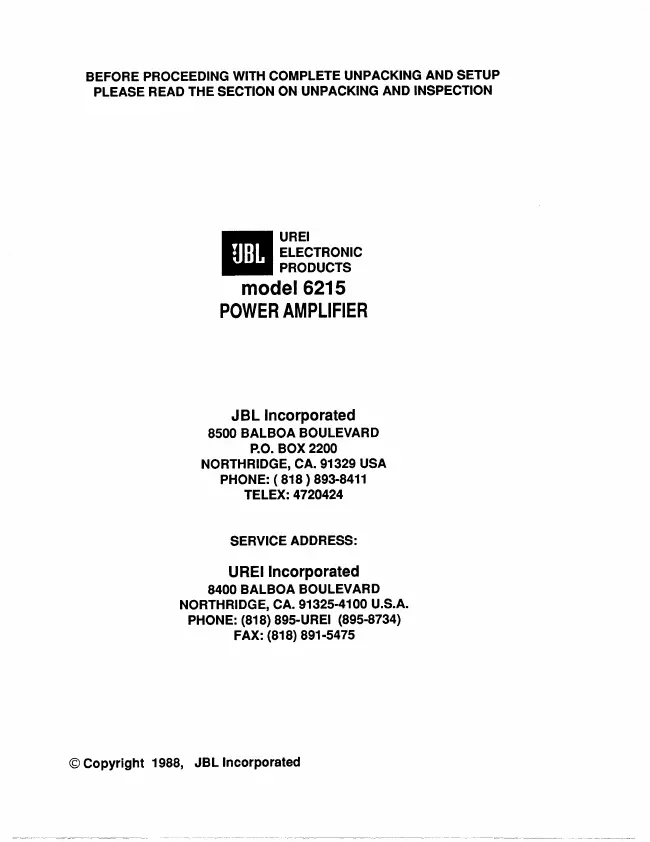JBL - 6215 - Amplifier
Manufacturer:
Equipment:
6215
Date:
1988
Category:
Group:
Sub Group:
Information
The JBL Model
6215 power amplifier has been designed to meet
the most critical professional sound requirements. It is
rugged and road-worthy, conservatively rated, and can handle
reactive loads with ease.
The engineering design approach stresses the optimization of
each stage, allowing high slew rate and relatively low loop
gain. Overall feedback has been held to a minimum and is
employed only to stabilize the gain and the operating point.
This design approach results in amplifiers with excellent
performance under the most demanding dynamic input and load
conditions. As evidence of the stress on dynamic rather than
static or steady-state distortion mechanisms, transient
intermodulation distortion measures less than 0.03% by the
DIM 100 test. (Leinonen, Otala, and Curl, "A Method for
Measuring Transient Intermodulation Distortion (TIM)",
Journal of the Audio Engineering Society. Vol. 25, No. 4,
April, 1977, pp. 170-177.)
Reliable operation of the amplifier is ensured through the
following protection modes: Current is limited under
improper load or drive conditions. An output relay, with
front panel LED indication, protects the loudspeaker load
under conditions of DC offset or large low-frequency
transients. The relay also provides power-up, power-down,
and "brown out" muting to protect loudspeakers from AC power
transients generated anywhere in the signal path. LED's on
the front panel indicate the onset of clipping and standby mode.
The JBL Model
6215 amplifier may be operated in the normal
stereophonic mode, dual monophonic mode, or bridged
monophonic mode. Rear panel switching sets these modes,
obviating the need for patch cords, level matching, etc.
Active differential Input circuitry offers the benefits of
balanced operation without the use of input transformers.
Input connections may be made via 3-pin XL-type connector,
three-conductor (TRS) 6.3 mm (1/4 in.) phone jack, or
barrier strip. The barrier strip has separate terminals for
audio ground and chassis ground.
The five-way output binding posts are arranged on 19 mm (3/4
in.) center so that bridged as well as normal connections
may be made with standard dual banana plugs, bare wire, or
terminal lugs.
Service and user manual
Manual type:
Service and user manual
Pages:
29
Size:
2.9 MB
Language:
english
Revision:
Manual-ID:
Date:
January 1988
Quality:
Scanned document, all readable.
Upload date:
Oct. 29, 2017
MD5:
c14ad5e7-b328-be91-022f-f8f0900c47bc
Downloads:
447
